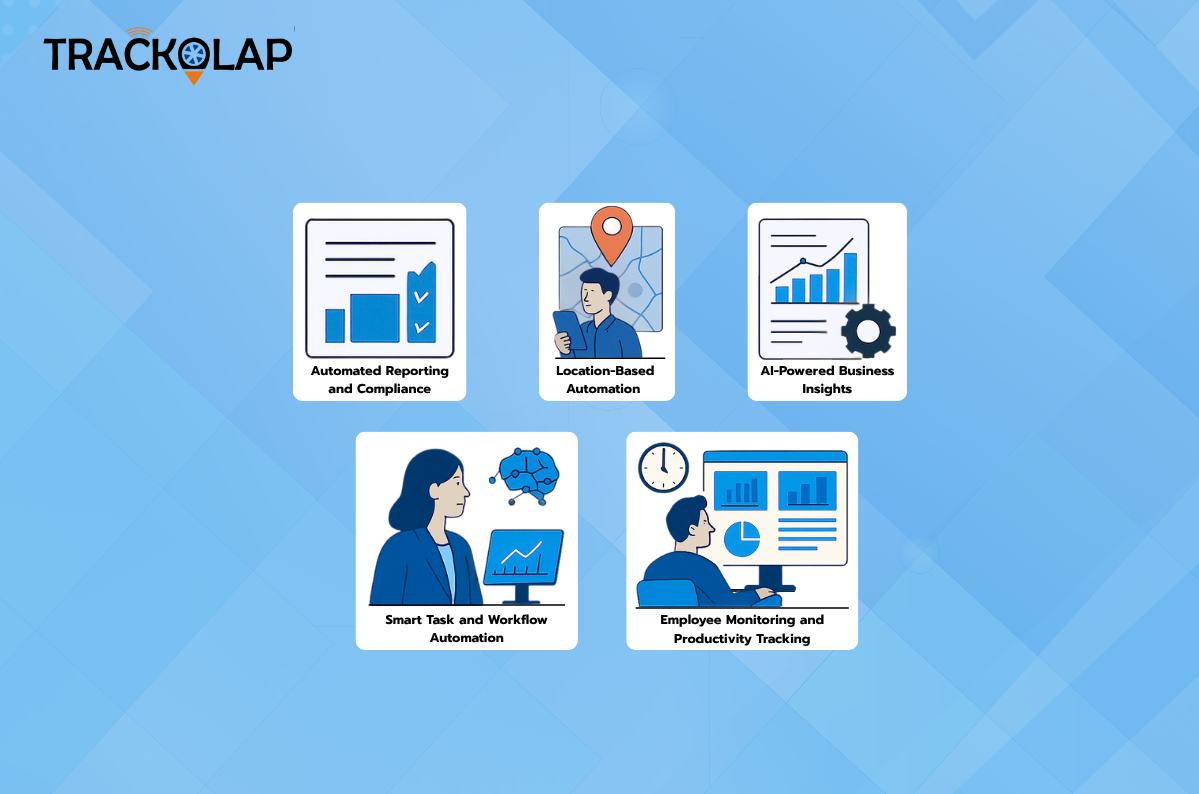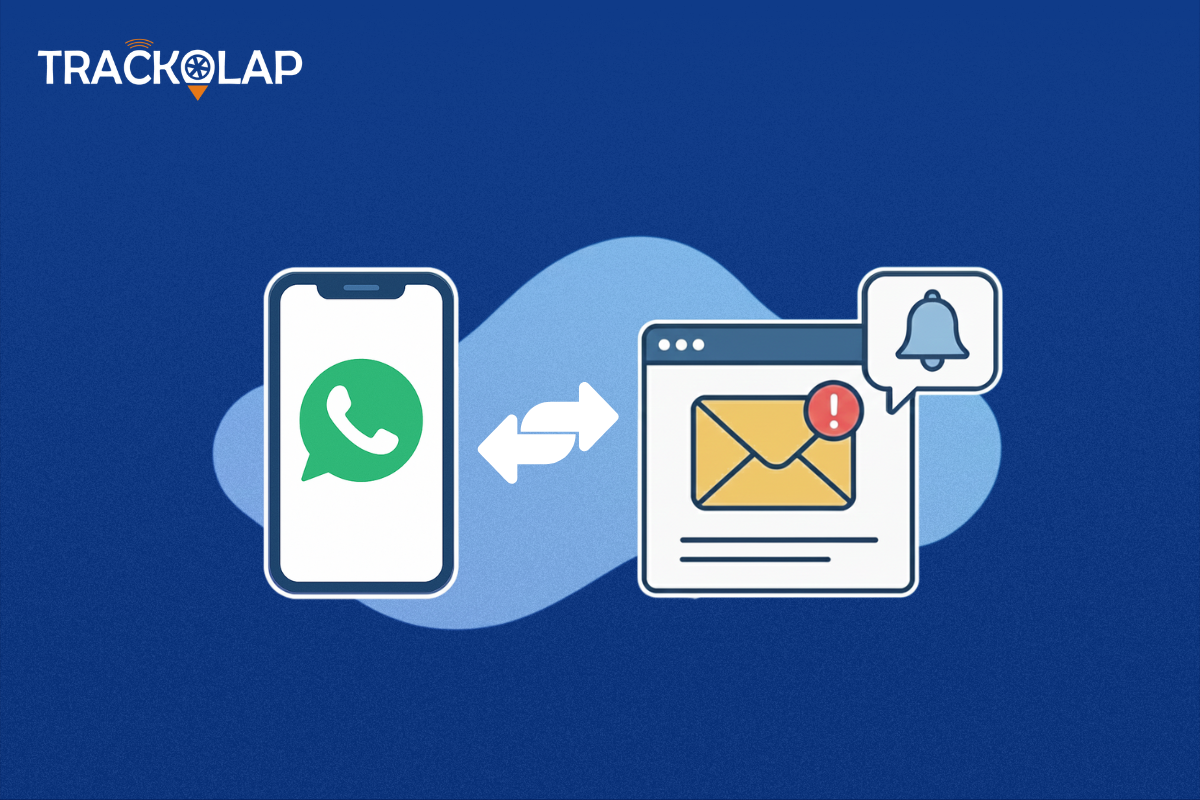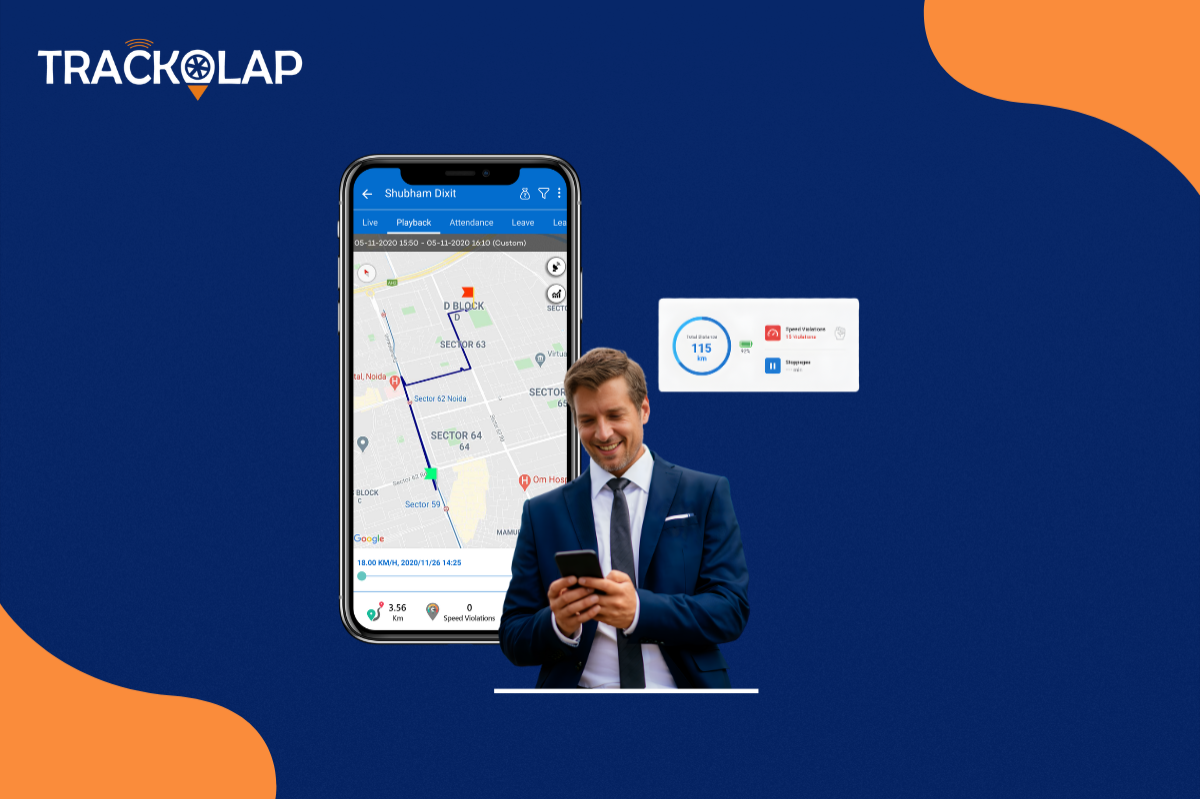
A Complete Guide to Business Automation Trends for 2025
Automation in business is not a concept of the future. It is a powerful strategy for the most dynamic and productive enterprises worldwide.
Automation methods are being actively developed as 2025 comes closer to handling more complex business issues such as task distribution, performance improvement, monitoring, and remote team management.
When companies invest in smart automation today, they are not only simplifying business processes but also making data-driven decisions much more quickly, increasing staff productivity and accelerating scalability. So, how about considering the most influential automation business trends that impact the way modern businesses are operated?
1. Unified Employee Monitoring and Productivity Tracking
Business Automation comprises more than delegation of tasks in 2025. It means having complete visibility of how your teams operate.
This is going in the direction of one-stop solutions where there will be:
Monitoring of Employees' Attendance
Location tracking for field staff
Task progress updates
Live productivity scores
Under automation, organizations no longer have to depend on manual timesheets or status meetings. Systems that track check-ins, position history, and work changes in real time are used alternatively. It helps managers to track distributed teams and makes everything transparent and accountable.
Combined with employee productivity software, employers gain beneficial information including when and how much is being produced, when the workforce is idle, when and how long workers are working, and the general performance of the team interested, all in a fully automatic manner.
Why it matters: It is not intrusive to monitor anymore. It becomes an instrument to streamline work and identify top performers.
2. Smart Task and Workflow Automation
Redundancy eliminates productivity. When it comes to business automation in 2025, the elimination of manual updates, approvals, and follow-ups is the most notable change.
Businesses can use smart automation to:
Auto-assign tasks based on availability, skill sets, or location
Trigger reminders and escalations when deadlines are missed
Automatically update task status upon completion
Send notifications and reports to managers—without the need to ask
With this automation, nothing is left behind. There are lead follow-ups, scheduling of visits, and information sharing all put through an automated rule-based engine.
Result: More efficient activity, fewer mistakes, cheerful teams oriented at work.
3. Location-Based Automation for Field Teams
With the rise of field operations, delivery-based services, location-based business automation, and hybrid work patterns will be essential in 2025. Such functions as geofencing, live GPS tracking and route stripping have become a standard.
Imagine this:
Your field worker goes to a site of a client and is automatically recorded.
They complete an activity and status updates are auto-activated.
They depart the location, and travel records are posted without any manual editing.
This no-hassle location-based automation eliminates paper trails or continuous phone calls and makes it simple for organizations to monitor field performance.
Advantages: Enhanced accountability, less time theft, and superior customer service.
4. AI-Powered Business Insights
In 2025, automation will be a learning tool rather than a performance tool. Through the incorporation of AI, enterprises are currently getting predictive and takeable insights within their systems.
Some real-world applications include:
Identifying employees at risk of burnout based on work patterns
Forecasting project delays using historical task data
Analyzing client interactions to improve service workflows
Spotting productivity drops early and suggesting corrective actions
As AI processes the information collected by employee monitoring tools and task management software, corporations can be ready in advance instead of issuing corrections.
Key Result: Reduction of guesswork and more strategic planning.
5. Automated Reporting and Compliance
Creating reports can be a boring and inaccurate process, particularly among those companies that rely on manual reporting systems.
By 2025, tools used in automation are generating:
Overviews of the accomplishment of daily tasks
Location-based visit records
On work-hour reports of employees
Performance reviews will be done on a monthly basis
It is done without any manual work. Managers will stop pursuing groups of the reports, and any compliance demands such as attendance, field report or any performance indicator are easily rendered.
Impact: Saves hours of administrative work and makes records available for auditing whenever needed.
6. Mobile-First Automation for On-the-Go Teams
In a mobile-first world where employees are always on the go, business automation is becoming more and more common. The automation tools that are mobile-based are enabling employees to:
Check out or check in anywhere
Get real-time updates on the tasks
Post or mail documents, notes or pictures immediately
Sending and receiving messages in the app without changing the tools
This becomes particularly crucial to field teams, sales executives, service professionals, and staff working off-site who require flexibility and accountability at the same time.
Why it's important: Automation is more accessible, user-friendly, and effective, as it will be carried in your pocket.
Final Thoughts: Stay Ahead by Automating Smartly
The theme of business automation in 2025 is clarity, control and consistency. If you want to monitor employee results, find an automated way to balance tasks or keep track of field employees, any automation solution gives you this without any difficulty in real time. The most successful businesses are the ones that do not simply say that there has to be the use of digital tools but transform the stage of automation into a culture. When you want to introduce a level of productivity in operations, improve the performance and productivity of team members, and have visibility without micromanaging, it is time to hustle.
TrackOlap, the all-in-one employee monitoring, productivity and workflow automation platform, is designed to fuel this change. The ability to track its field mobility where everything is on the go with intelligent task automation where you need to have real-time dashboards all need to be consolidated into one smart solution. See how your business can benefit and even get to the next level with TrackOlap. Book a free demo today and learn how to enter the future of work.
Frequently Asked Questions (FAQs)
What is business automation?
Business automation is the use of technology to perform repetitive tasks, reduce manual effort, and streamline processes within an organization.
Why is business automation important in 2025?
In 2025, automation is essential to improve productivity, reduce costs, and remain competitive in a rapidly evolving digital landscape.
What are the top business automation trends in 2025?
Trends include AI-driven automation, hyperautomation, RPA, intelligent CRMs, workflow orchestration, and low-code platforms.
What is hyperautomation?
Hyperautomation combines AI, machine learning, and RPA to automate complex business processes more intelligently.
How does AI improve business automation?
AI enables decision-making automation, pattern recognition, predictive analytics, and personalized customer experiences.
What is RPA in automation?
Robotic Process Automation (RPA) uses software robots to handle high-volume, rule-based tasks across systems.
Can small businesses benefit from automation?
Yes, small businesses can use automation to reduce manual workload, enhance customer service, and scale operations efficiently.
Which departments benefit most from automation?
HR, sales, marketing, customer service, IT, and finance are the most commonly automated business areas.
What tools are used for business automation?
Popular tools include CRM systems, ERP platforms, workflow automation software, RPA bots, and AI-based analytics tools.
What is workflow automation?
Workflow automation is the design and execution of automated processes to replace manual workflows with digital sequences.
How can CRM automation help businesses?
CRM automation streamlines lead nurturing, customer communication, follow-ups, and sales pipeline management.
What role does data analytics play in automation?
Data analytics powers decision-making in automation by identifying patterns and optimizing performance based on insights.
Is automation expensive to implement?
While initial investment varies, automation often leads to cost savings, efficiency, and long-term ROI for businesses of all sizes.
Can automation replace human jobs?
Automation replaces repetitive tasks but also creates new roles in oversight, development, and data management.
What is low-code automation?
Low-code automation platforms enable users to build automated workflows with minimal coding knowledge using visual tools.
What are the challenges in implementing automation?
Common challenges include employee resistance, integration issues, upfront costs, and lack of clear strategy.
How do I choose the right automation tools?
Start by identifying bottlenecks in your workflow, then compare tools based on scalability, integrations, and ease of use.
What industries are leading in automation adoption?
Industries such as manufacturing, finance, healthcare, retail, and logistics are at the forefront of automation in 2025.
How does automation impact customer experience?
Automation enables faster response times, personalized interactions, and consistent service quality across channels.
Where can I start with business automation?
Begin with repetitive tasks in HR, finance, or customer service and expand automation gradually using data-driven insights.






























 Back to Blogs
Back to Blogs










 D-5 Sector-59, Noida, Uttar Pradesh (India)
D-5 Sector-59, Noida, Uttar Pradesh (India) contactus@trackolap.com
contactus@trackolap.com 7011494501
7011494501










